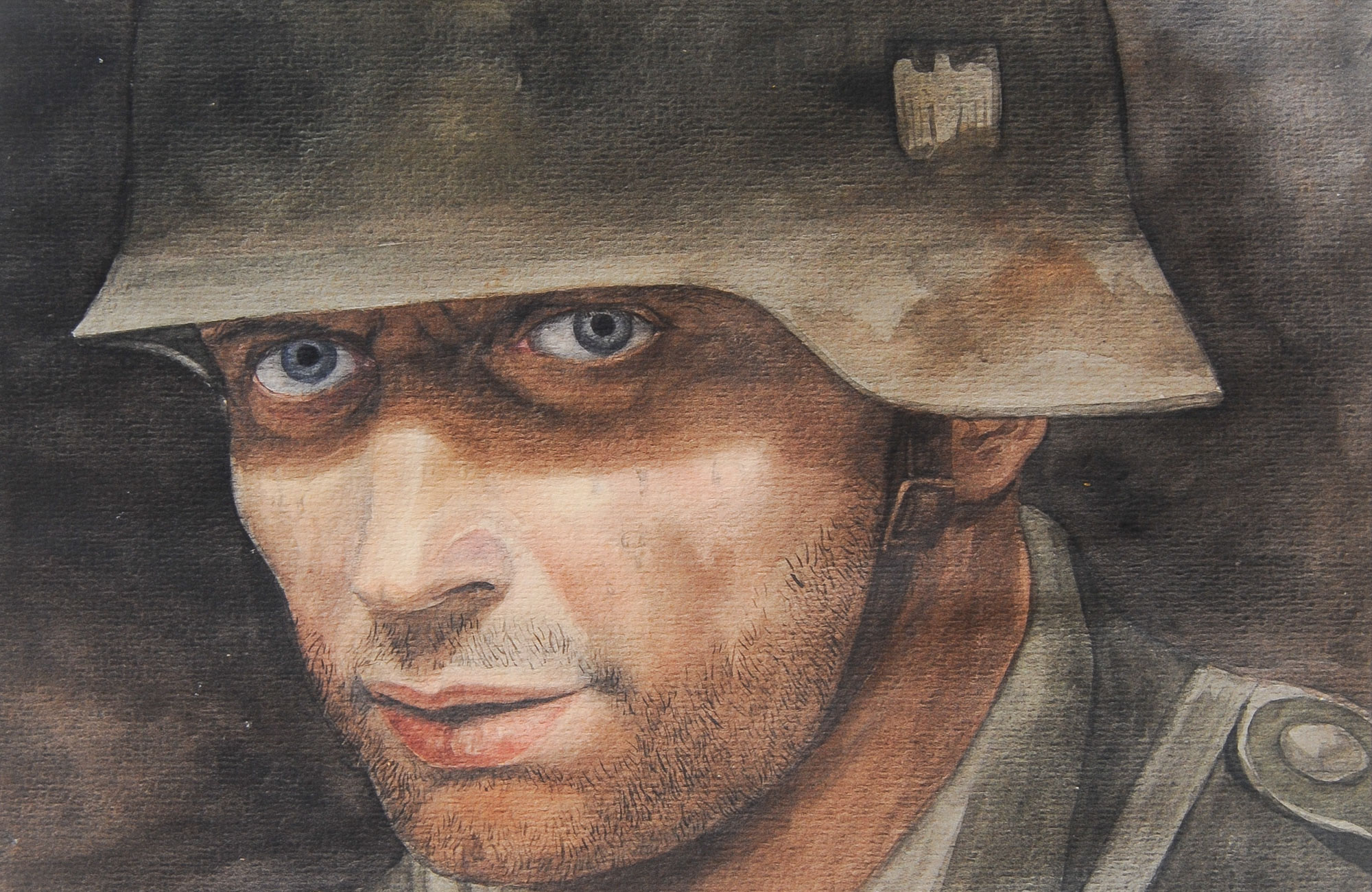Below is the unedited article originally published on the previous version of our website in 2012. The museum’s curatorial staff has since learned additional information about these works and the artist who created them. These recent developments have been published in the amending article found directly below the original article.
Objects often find their way to a museum in the most peculiar of ways. This aptly describes the Berretz watercolors that were recently donated. The donor, a native of the Pee Dee, served in the military during the second World War. While the donor was serving in combat outside of Koslar, Germany during the winter of 1945, his commanding officer returned to camp with a series of watercolors. His sargent had discovered the watercolors in an evacuated artist’s studio overlooking the Roer River. The works were offered to the donor as a gift, at which point, the donor had them shipped back to South Carolina. For over sixty years, the works remained in storage until their recent donation.
Several of the works are signed and dated ‘Berretz 42’. Museum curatorial staff has yet to learn any more details concerning the artist, but their research is ongoing. The subject matter of all the works appear to pertain to the different aspects of the war from the German point of view. Often art from WWII Germany is associated with Nazi propaganda, this couldn’t be further from the case with the Berretz watercolors. These works are more documentarian in their nature, as they depict the harsh non-partisan realities of war; not the idealized patriotic notions of serving of one’s duty for country.
This collection of watercolors is a quality example of what the museum is looking for from a donation. They are rich in both terms of pure artistic value and interpretative currency. They have merit on the grounds of visual interest, local historical significance, an interesting backstory, & exciting subject matter. So this particular acquisition turned out to be a great win for the museum’s collection. Not all donations are required to meet such a stringent list of conditions, but if an object can do all of the previously listed; it will have better chances of acceptance. Any object with an interesting story and local historical significance meets the most basic prerequisite for consideration in an exhibit context.
Below is the amending article published in October of 2015. This article details some of the recent developments regarding these specific works.
By Stephen W. Motte – Curator of Collections and Interpretation
In January of 2015, the Berretz name was published on a website devoted to issues of restitution and repatriation of German art lost during the Second World War. After reviewing the information, the museum made contact with the Deutsche Zentrum Kulturgutverluste (German Center for Lost Cultural Property).
With the help of representatives from the Government Commission for Culture and the Media, and the daughter of the artist, the museum has been allowed to retain and exhibit the works of Gerhard Berretz, whose poignant images not only capture the harsh reality of human conflict, but reflect the mind of an artist in times of war.
Gerheard Berretz (1911 – 1990) grew up in a country at war. He was born in the German city of Cologne just three years before the outbreak of World War I. After the signing of the Treaty of Versailles in 1919, his hometown endured seven years of occupation by the British military.
It was during this time that he first developed his talents as an artist. Before being drafted into the army in 1939, Berretz studied art at various German academies and worked as a graphic designer for the Bayer pharmaceutical corporation.
Like many other conscripted objectors, Berretz served the infantry on the Eastern Front, where the casualties were high and prospects of German victory were bleak. During this time he kept a sketchbook, a visual journal in which he recorded his thoughts and experiences. One such surviving sketchbook has been cataloged by the Nazi Documentation Center as part of its ongoing open resource project in Cologne.
In 1942, Berretz was wounded in battle fewer than ten miles from Moscow, and was transferred to a hospital in Germany. While recovering from his injuries, he created a series of 36 watercolor paintings based upon his sketches from the battlefield. The paintings were submitted to an exhibit in Berlin and were never seen again, presumed to have lost in a fire resulting from an Allied bombardment at the end of the war.







